The art world is full of fascinating works that have stood the test of time, from ancient sculptures to modern masterpieces.
Let’s uncover 22 iconic artworks starting with the letter “M.” Each has its unique story and significance. We’ll explore paintings, sculptures, and more, offering a deeper appreciation of art history’s diversity.
Whether you’re an enthusiast or just curious, join us on this journey. You’ll discover the mastery and imagination of artists who’ve left an indelible mark.
There’s something for everyone, from Michelangelo’s masterpieces to Monet’s mesmerizing landscapes.
So, come along as we explain the tales behind these memorable creations. Let’s be inspired by the artists who’ve shaped our world.
1. Mona Lisa by Leonardo Da Vinci, 1503-1519
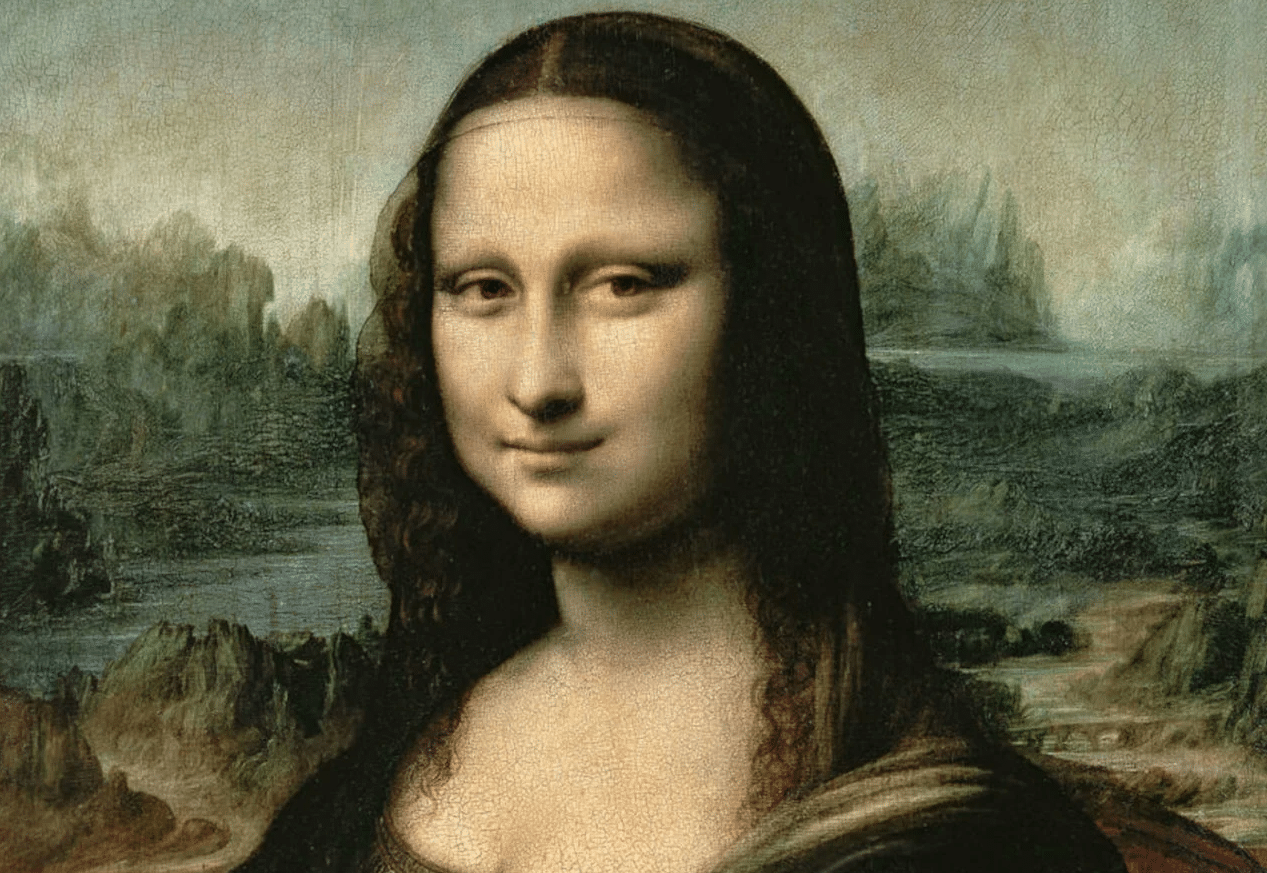
The Mona Lisa, painted by Italian Renaissance artist Leonardo da Vinci, is arguably the most famous painting in the world.
This enigmatic portrait features a woman with a mysterious smile seated against a distant landscape background.
The painting’s subtle modeling, sfumato technique, and the subject’s captivating gaze have intrigued viewers for centuries.
The Mona Lisa’s enduring popularity has made it an art history icon, inspiring countless reproductions, parodies, and references in popular culture.
The exact year it was painted is not known, but experts think Leonardo da Vinci made this painting sometime between 1503 and 1519.
2. The Milkmaid by Johannes Vermeer, 1657-1658
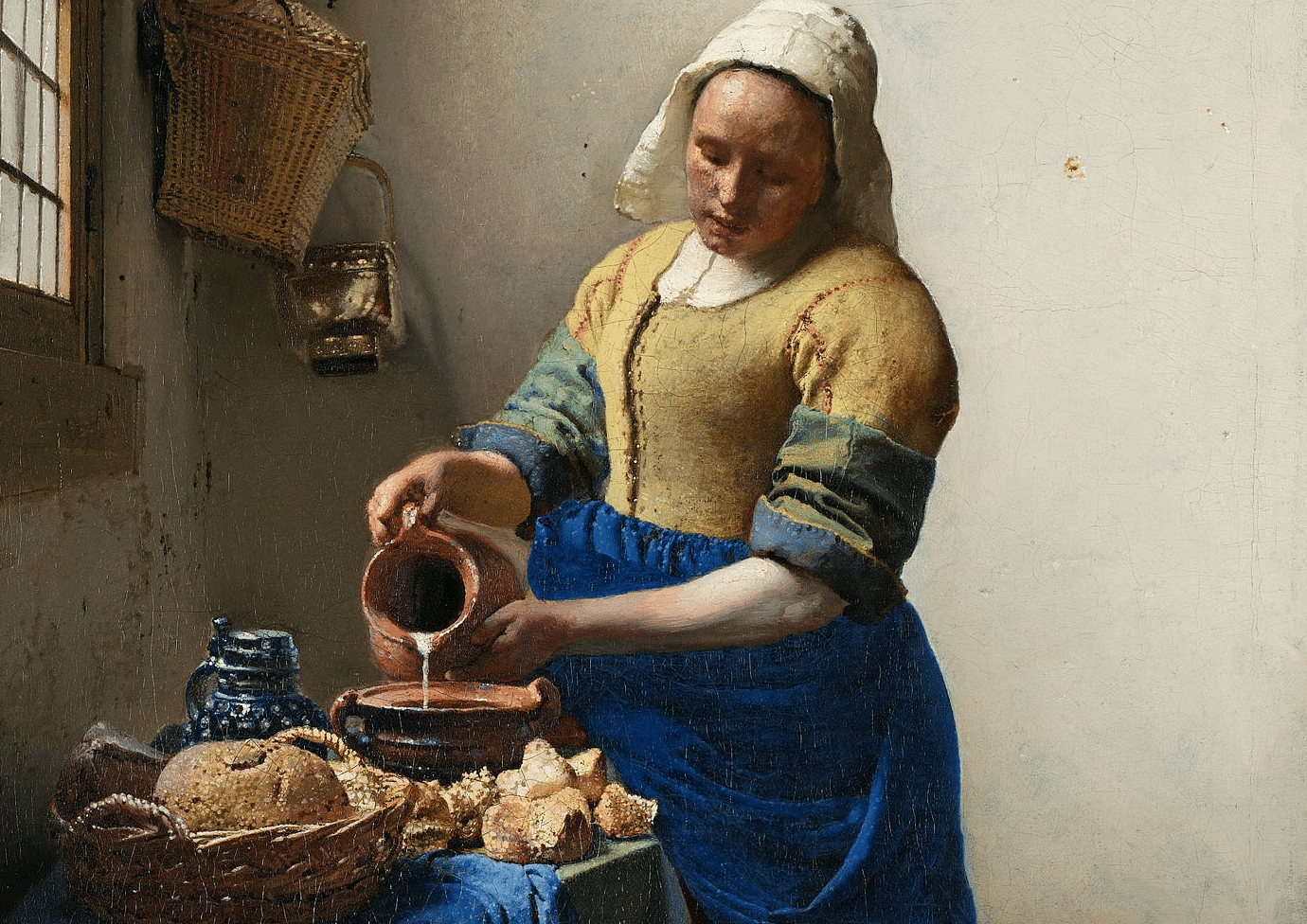
Johannes Vermeer’s The Milkmaid is a stunning example of Dutch Golden Age painting. This intimate scene depicts a young woman pouring milk from a jug into a bowl bathed in soft, natural light.
Vermeer’s masterful use of color, texture, and perspective creates a sense of tranquility and beauty in this everyday moment.
The painting’s precise composition and attention to detail showcase Vermeer’s remarkable skill and contribute to its enduring appeal.
The precise year is unclear, but it is believed Vermeer created this work sometime between 1657 and 1658.
3. The Starry Night by Vincent Van Gogh, 1889
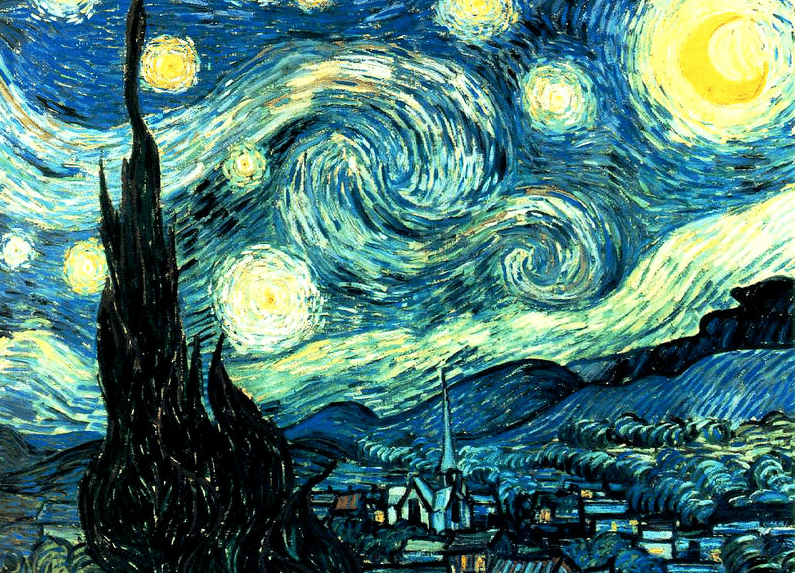
Vincent van Gogh’s The Starry Night is one of the most recognizable paintings in the world.
This oil on canvas depicts a swirling night sky over a small village, with a prominent cypress tree in the foreground.
Van Gogh’s expressive brushstrokes, vibrant colors, and dynamic power capture the essence of his unique artistic vision.
The painting, created while Van Gogh was in a mental asylum, symbolizes the artist’s inner turmoil and creative genius.
4. Marilyn Diptych by Andy Warhol, 1962
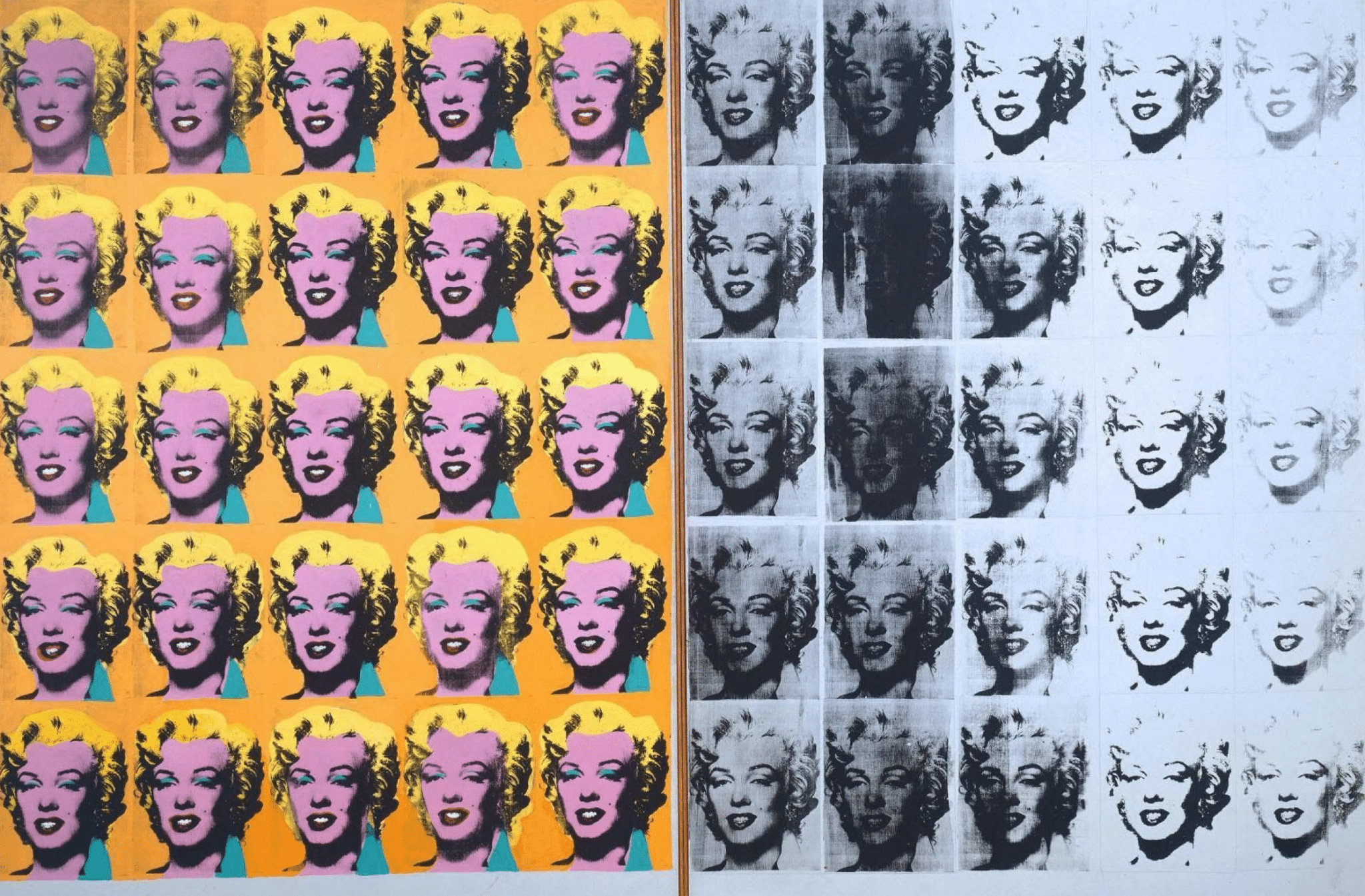
Andy Warhol’s Marilyn Diptych is an iconic Pop Art work featuring repeated images of actress Marilyn Monroe.
Created shortly after Monroe’s death, the work consists of 50 photos of the actress, half vibrant colors and half black and white.
Warhol’s use of repetition, bold colors, and celebrity imagery reflects the mass media culture of the 1960s and challenges traditional notions of art.
The Marilyn Diptych has become a symbol of Warhol’s groundbreaking contributions to 20th-century art.
5. Madame X by John Singer Sargent, 1883-1884

John Singer Sargent’s Madame X is a stunning portrait of Virginie Amélie Avegno Gautreau, a notorious Parisian socialite.
The painting features Madame Gautreau in a black evening dress with jeweled straps, striking a provocative pose against a dark background.
Sargent’s skillful rendering of the subject’s porcelain skin elegantly turned head, and the dramatic contrast of the dress against the background create a mesmerizing and alluring image.
The painting initially sparked controversy due to its perceived sensuality but has since become a celebrated American artwork.
The exact years are not certain, but scholars believe Sargent worked on this portrait between 1883 and 1884.
6. The Persistence of Memory by Salvador Dalí, 1931
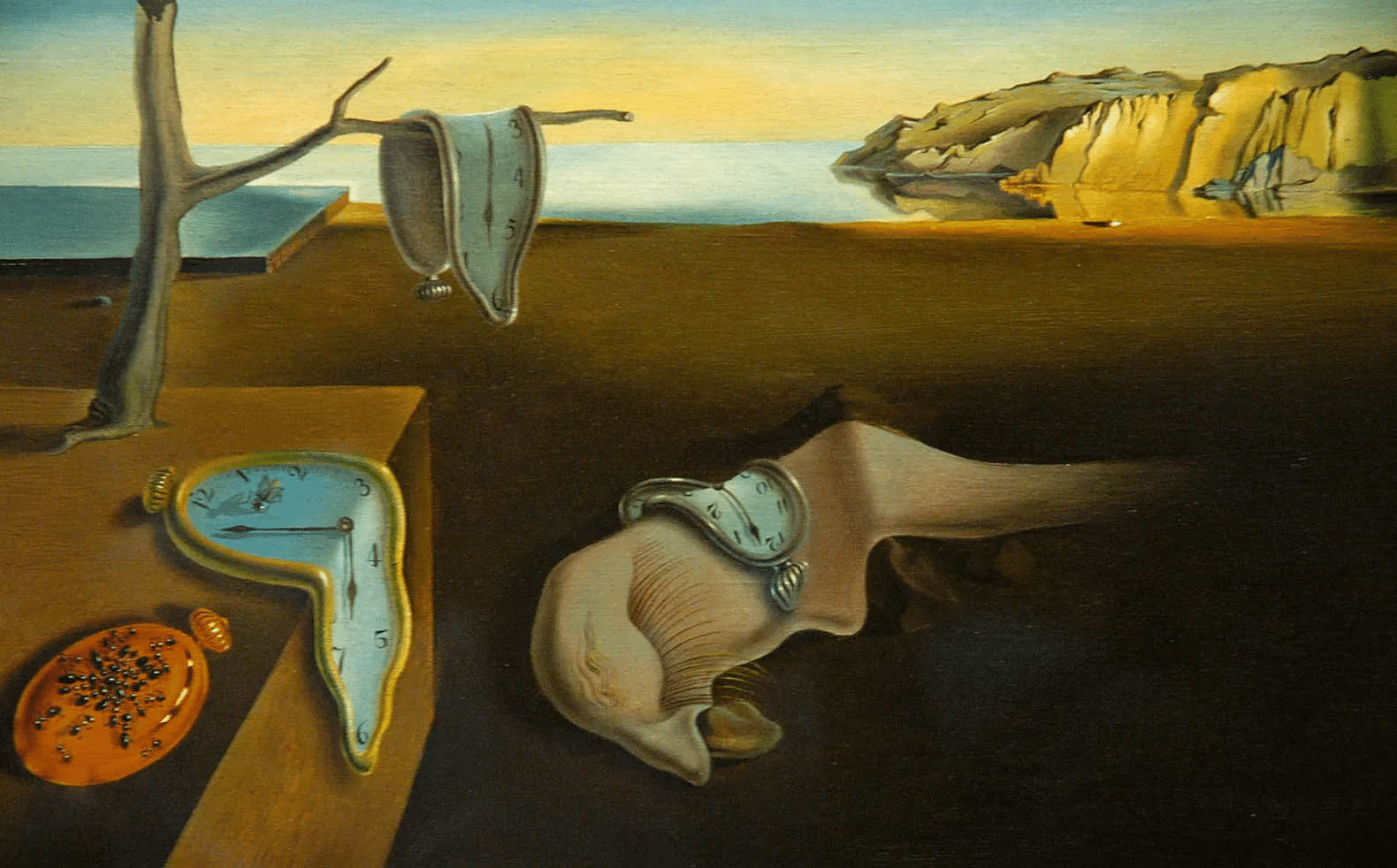
Salvador Dalí’s The Persistence of Memory is a surrealist masterpiece that explores the nature of time and the subconscious mind.
The painting features melting pocket watches draped over a desolate landscape, with a mysterious figure in the center.
Dalí’s use of bizarre, dream-like imagery, precise rendering, and symbolic elements create a haunting and thought-provoking work that has become an icon of Surrealism.
7. Madonna and Child with Saints by Masaccio, 1426-1428
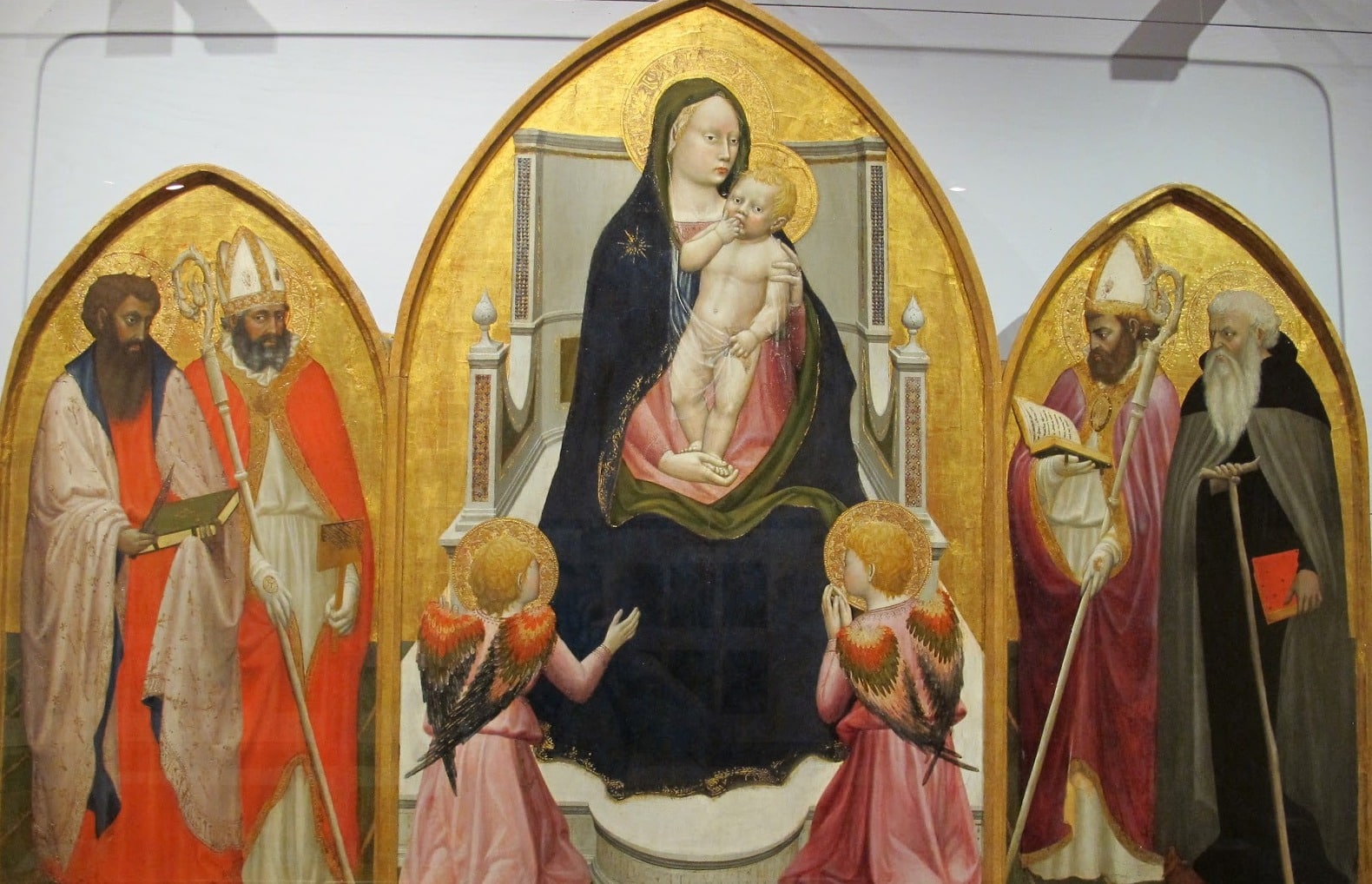
Masaccio’s Madonna and Child with Saints is a revolutionary work of early Renaissance art. This altarpiece features the Virgin Mary enthroned with the Christ Child, surrounded by saints and angels.
Masaccio’s use of linear perspective, naturalistic figures, and emotional depth set a new standard for religious art of the time.
The painting’s innovative style and humanistic approach profoundly influenced the development of Renaissance art.
The accurate date is uncertain, but art scholars estimate Masaccio painted it between 1426 and 1428.
8. Maesta by Duccio di Buoninsegna, 1308-1311
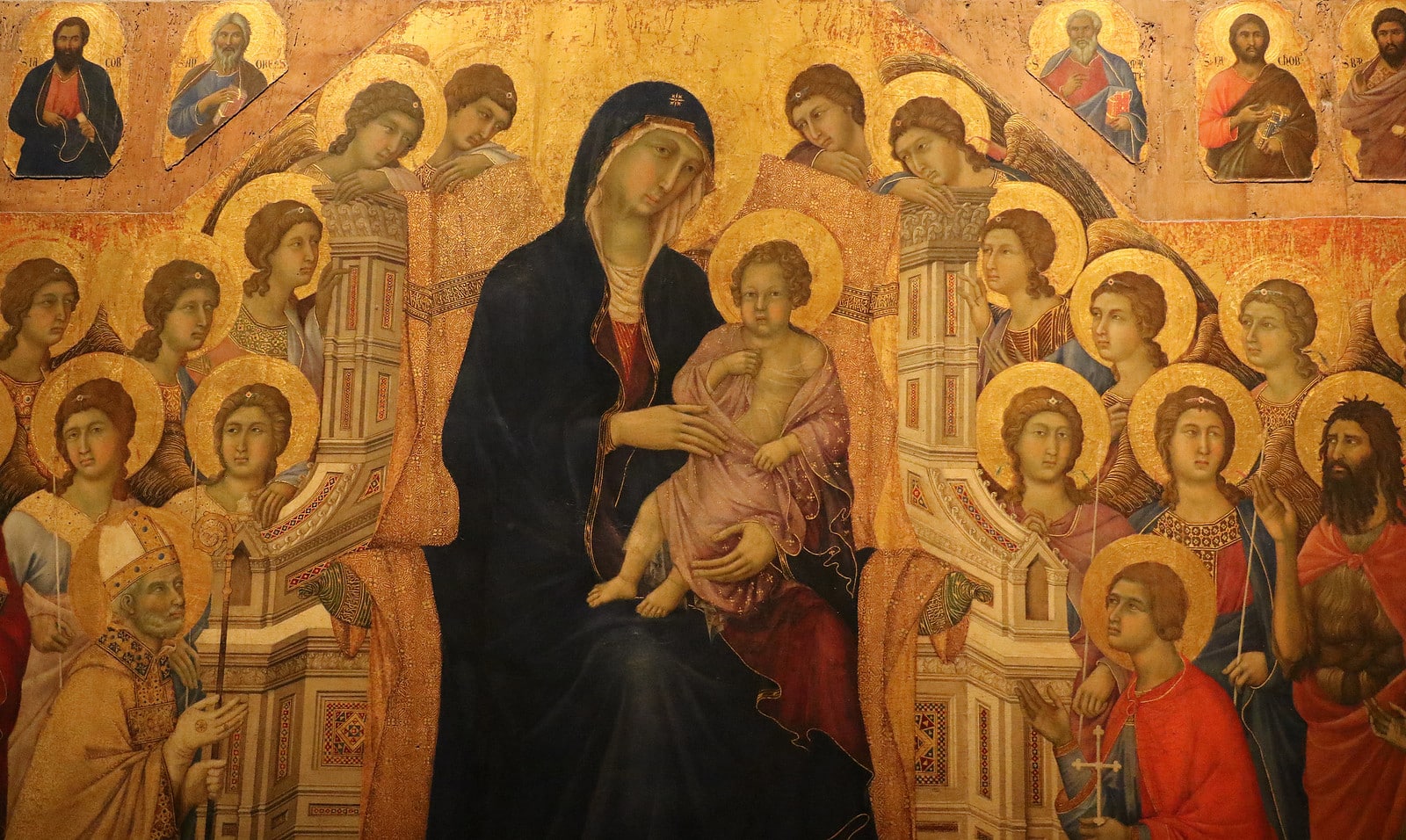
Duccio di Buoninsegna’s Maesta is a monumental altarpiece that originally graced the high altar of Siena Cathedral.
This double-sided panel features the Virgin Mary enthroned with the Christ Child, surrounded by saints and angels on one side and scenes from Christ’s life on the other.
Duccio’s use of gold leaf, vibrant colors, and delicate linework create a dazzling and spiritually charged work of art.
The Maesta represents a high point of Sienese painting and a key moment in the development of Italian Gothic art.
Scholars are unsure of the precise date but estimate that Duccio made this altarpiece sometime between 1308 and 1311.
9. The Marble Faun by Harriet Hosmer, 1860
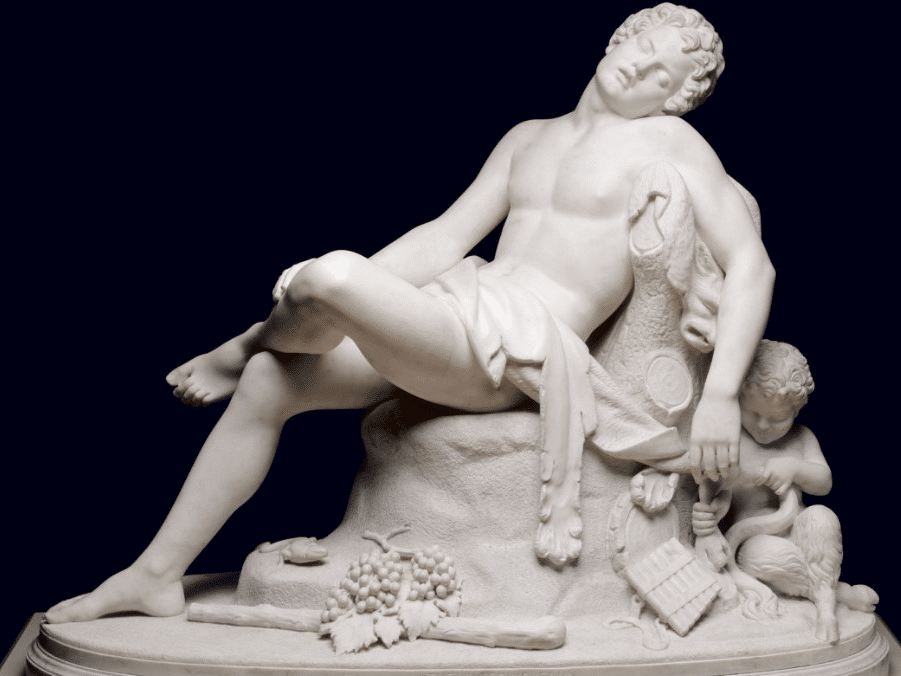
Harriet Hosmer’s The Marble Faun is a remarkable example of Neoclassical sculpture that showcases the talent of this pioneering American female artist.
The statue depicts a young faun playing the pipes, with his goat legs and hooves realistically rendered in marble.
Hosmer’s skillful carving, attention to anatomical detail, and subtle expression of the faun’s face create a lively and engaging work of art.
The Marble Faun helped establish Hosmer’s reputation as a leading sculptor of her time.
10. The Medusa Raft by Théodore Géricault, 1818-1819
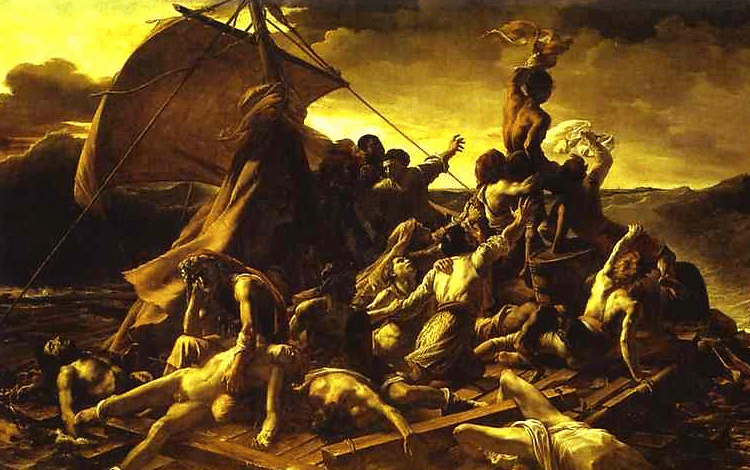
Théodore Géricault’s The Medusa Raft is a monumental Romantic painting depicting a horrific shipwreck’s aftermath.
The painting shows the survivors of the French naval frigate Medusa clinging to a makeshift raft, their desperation and suffering palpable in their faces and bodies.
Géricault’s dramatic use of light, expressive brushwork, and complex composition create a powerful and dynamic work that addresses themes of human struggle, hope, and despair.
The exact years are not definite, but experts think Géricault painted this sometime between 1818 and 1819.
11. Madonna of the Rocks by Leonardo da Vinci, 1483-1486

Leonardo da Vinci’s Madonna of the Rocks is a stunning example of the artist’s mastery of sfumato and chiaroscuro techniques.
This oil painting depicts the Virgin Mary with the Christ Child, the infant John the Baptist, and an angel in a rocky cave setting.
Da Vinci’s use of soft, blended tones and subtle lighting creates a sense of depth and mystery, while the figures’ enigmatic expressions and gestures add to the painting’s allure.
Although the exact year is uncertain, most experts think da Vinci worked on this between 1483 and 1486.
12. Melencolia I by Albrecht Dürer, 1514
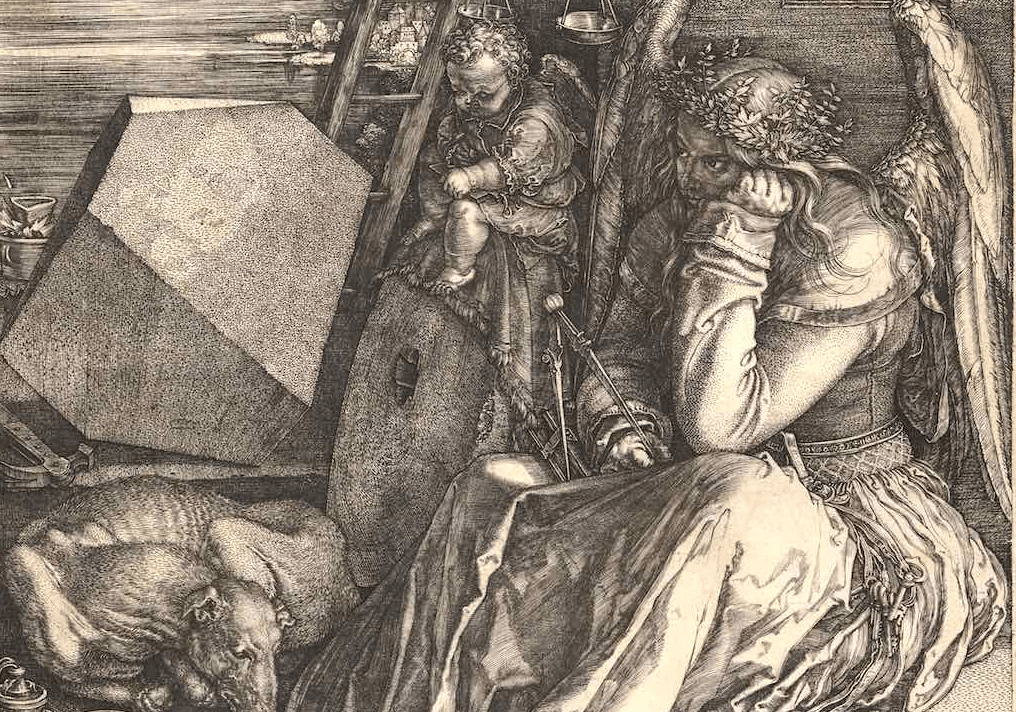
Albrecht Dürer’s Melencolia I is a complex and enigmatic engraving that embodies the Renaissance fascination with melancholy and creative genius.
The print features a brooding, winged figure surrounded by symbols of science, mathematics, and the arts.
Dürer’s intricate linework, rich symbolism, and masterful use of perspective create a visually stunning and intellectually engaging work that has intrigued scholars and art lovers for centuries.
13. Marilyn Monroe by Andy Warhol, 1967

Andy Warhol’s Marilyn Monroe series is a quintessential example of Pop Art that celebrates the iconic actress as a symbol of celebrity culture.
This print features a vibrant, screen-printed portrait of Monroe based on a publicity still from the 1953 Niagara film.
Warhol’s use of bold colors, repetition, and commercial printing techniques reflects the mass media’s role in shaping popular culture and challenges traditional notions of art and originality.
14. Madonna del Prato by Raphael, 1505

Raphael’s Madonna del Prato, also known as the Madonna of the Meadow, is a serene and harmonious painting that exemplifies the artist’s mastery of the High Renaissance style.
The painting depicts the Virgin Mary with the Christ Child and the young John the Baptist in a tranquil landscape setting.
Raphael’s balanced composition, graceful figures, and soft, luminous colors create a sense of ideal beauty and spiritual harmony.
15. Moonrise over the Sea by Caspar David Friedrich, 1822
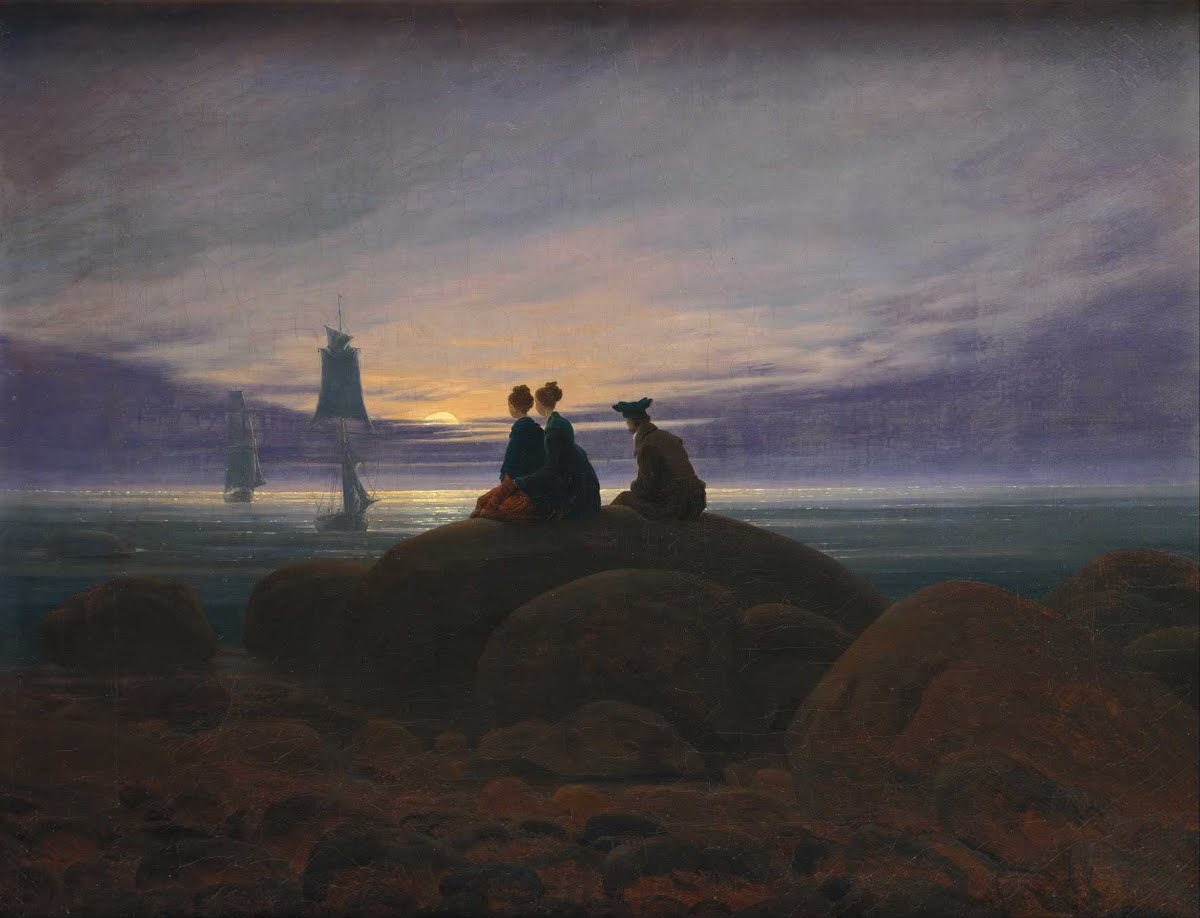
Caspar David Friedrich’s Moonrise over the Sea is a haunting and evocative work of German Romanticism.
The painting features a lone figure standing on a rocky shore, gazing at a vast, moonlit sea and sky.
Friedrich’s atmospheric lighting, subdued colors, and a sense of spiritual yearning capture the Romantic era’s fascination with nature, emotion, and the sublime.
16. The Magdalen with the Smoking Flame by Georges de La Tour, 1640

Georges de La Tour’s The Magdalen with the Smoking Flame is a striking example of the artist’s mastery of candlelight and chiaroscuro effects.
The painting depicts Mary Magdalene in a contemplative moment, her face illuminated by a candle flame.
La Tour’s skillful rendering of light and shadow and the figure’s quiet intensity create a powerful and emotionally charged work of Baroque art.
17. Migrant Mother by Dorothea Lange (1936)
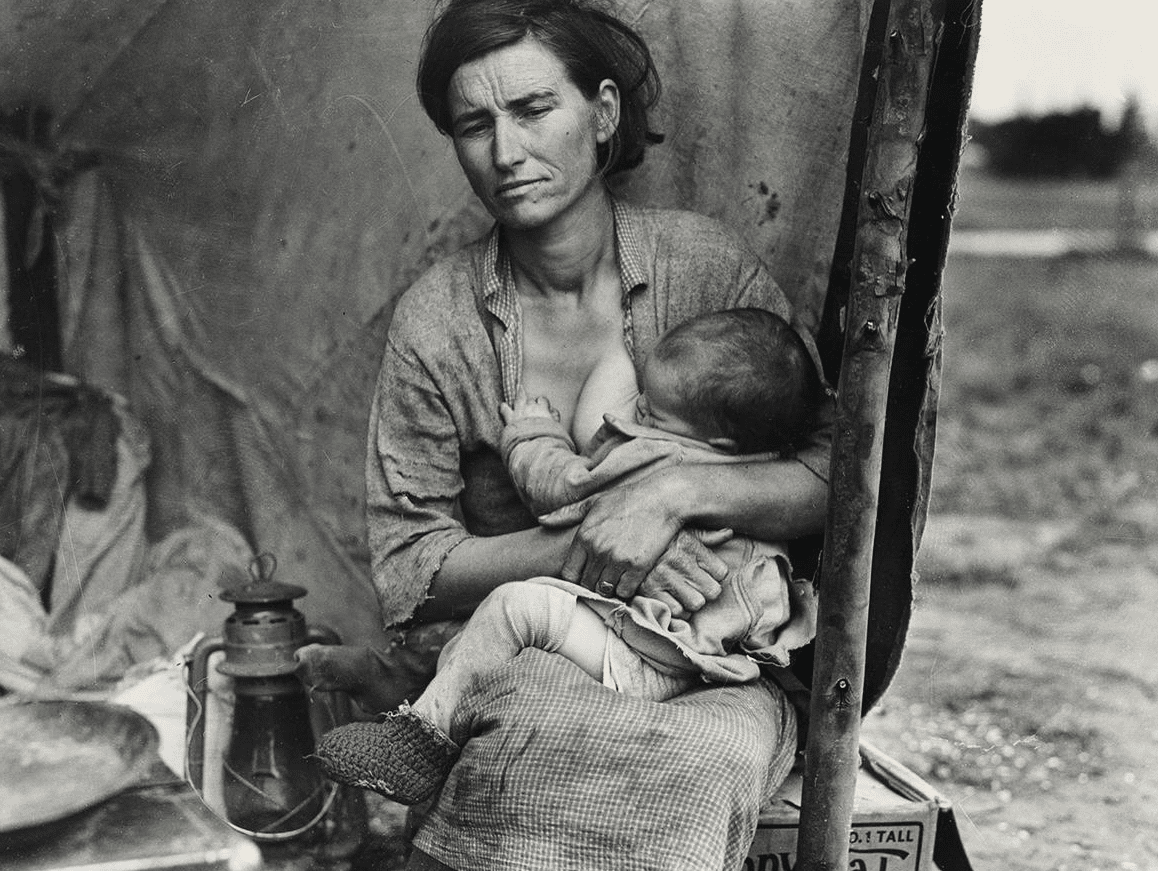
Migrant Mother is Dorothea Lange’s renowned photograph depicting a weathered mother with her children during the Great Depression. This powerful black and white portrait has become one of the most iconic images of the 20th century.
Taken in 1936 at a pea-pickers camp in Nipomo, California, the photo captures a 32-year-old mother named Florence Owens Thompson and three of her seven children. Lange’s camera frames the woman’s strained face, lined with worry, as her tent-living children bury their faces in her shoulders.
With its stark lighting and composition, Migrant Mother conveys the dignity and resilience of those struggling through the economic devastation of the Great Depression era. Lange’s ability to capture her subjects’ humanity in this spontaneous portrait made it a celebrated work of documentary photography.
18. The Martyrdom of Saint Matthew by Caravaggio, 1599-1600

Caravaggio’s The Martyrdom of Saint Matthew is a dramatic and powerful work of Baroque art that depicts the moment of the saint’s assassination.
The painting features a dynamic composition, with the figures arranged in a diagonal thrust, and Caravaggio’s signature use of chiaroscuro heightens the sense of drama and emotion.
The work’s realistic portrayal of violence and its psychological intensity make it a masterpiece of early Baroque painting.
The exact years are unclear, but scholars think Caravaggio painted this sometime between 1599 and 1600.
19. The Magpie by Claude Monet, 1868-1869
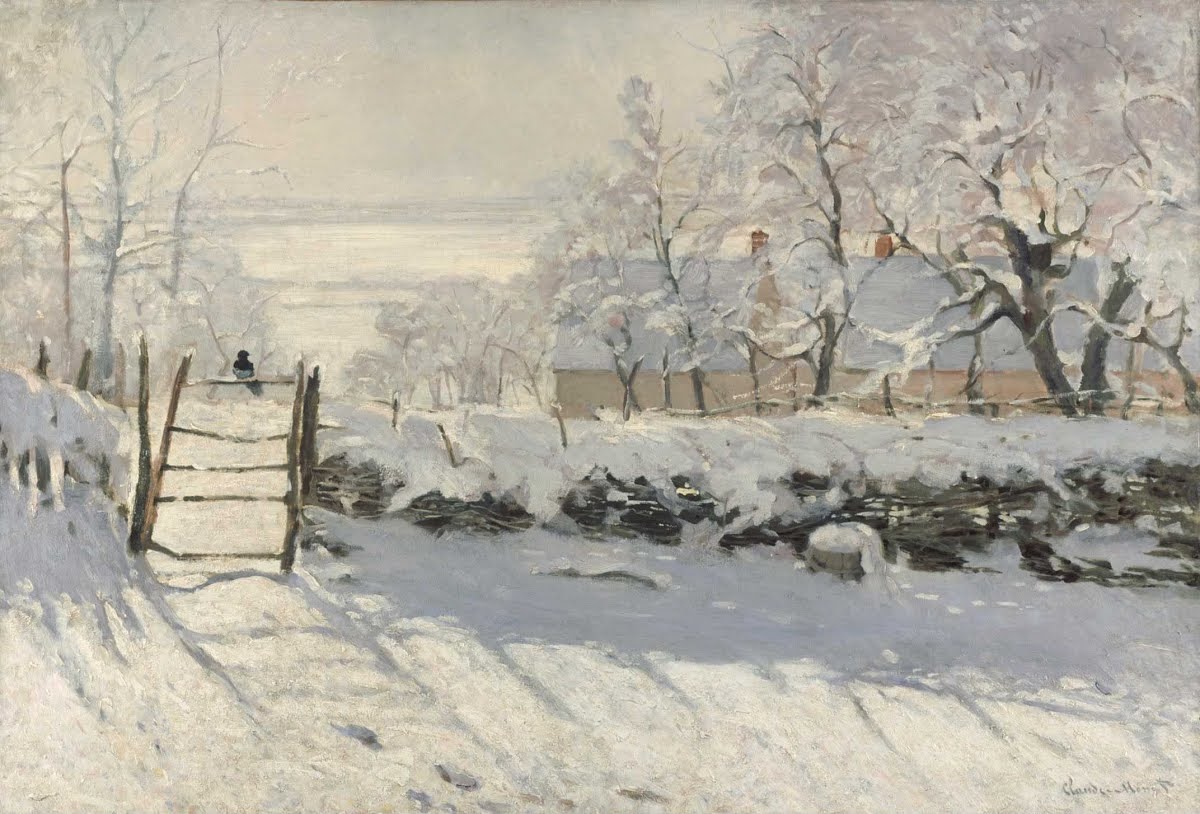
Claude Monet’s The Magpie is a stunning example of the artist’s early work and a precursor to his later Impressionist masterpieces.
The painting depicts a solitary magpie perched on a gate in a snowy landscape, with the soft, diffused light of a winter day filtering through the trees.
Monet’s loose, expressive brushstrokes and his keen observation of the effects of light and color on the landscape make this a captivating and atmospheric work of art.
Scholars are divided on the exact year, but it is estimated that Monet painted it sometime between 1868 and 1869.
20. Madonna and Child by Michelangelo, 1504
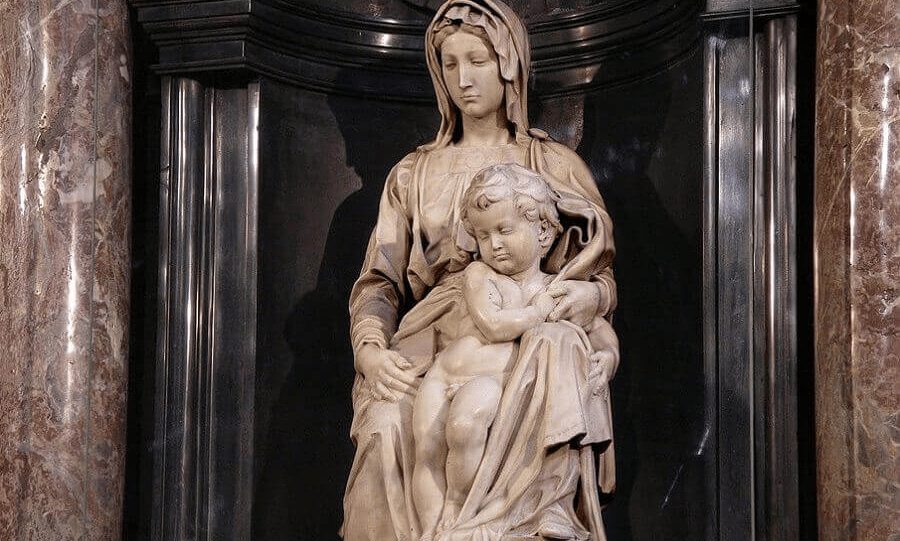
Michelangelo’s Madonna and Child, also known as the Bruges Madonna, is a remarkable example of the artist’s skill as a sculptor.
Carved from a single block of marble, the sculpture depicts the Virgin Mary holding the Christ Child, their faces and drapery rendered with exquisite detail and sensitivity.
The work’s serene beauty and emotional depth reflect Michelangelo’s mastery of the human form and his ability to convey spiritual meaning through stone.
21. The Musician by Pablo Picasso, 1921
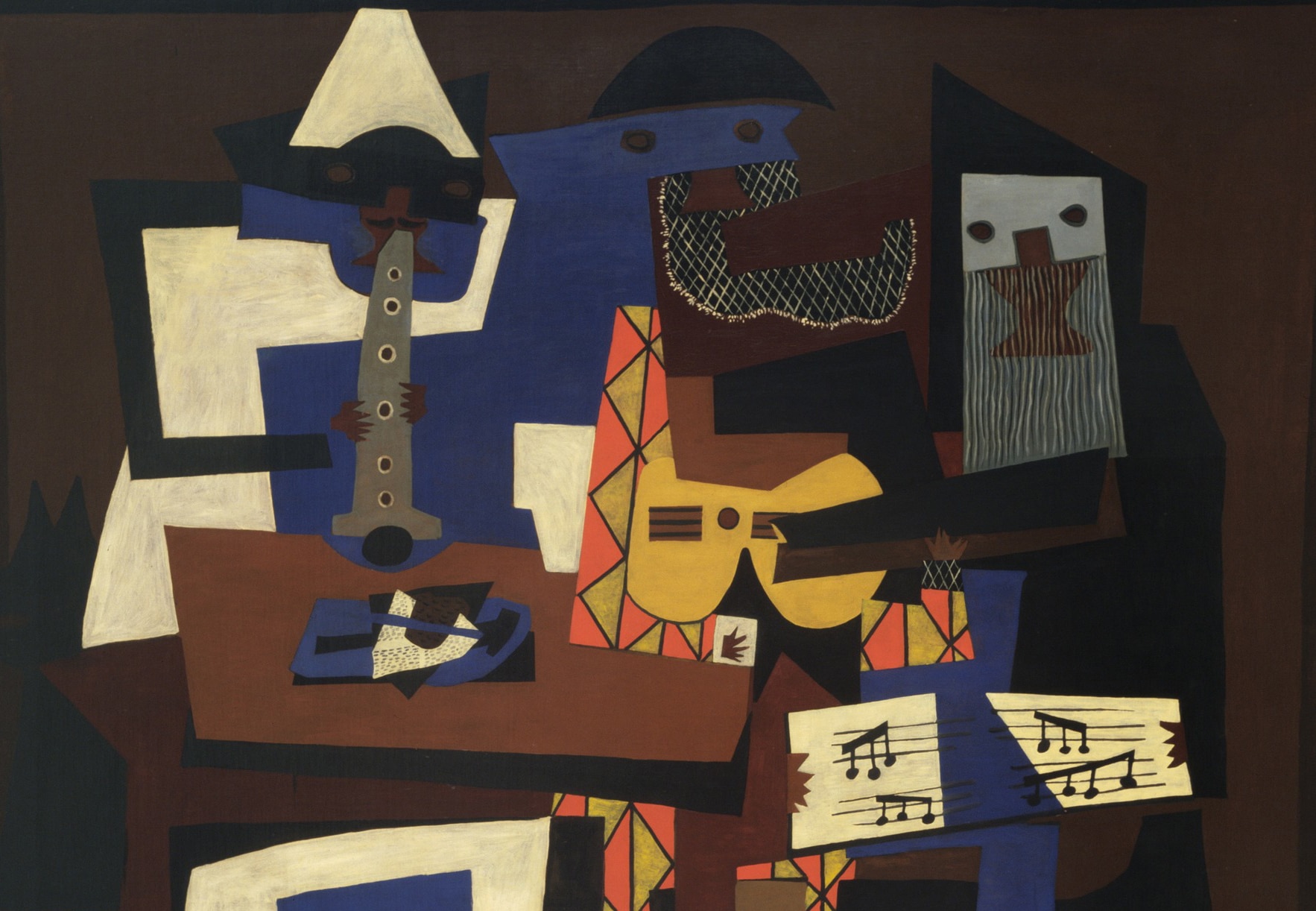
Pablo Picasso’s The Musician is a striking example of the artist’s Synthetic Cubist style.
The painting features a figure composed of flat, geometric shapes and bold, contrasting colors, holding a musical instrument.
Picasso’s innovative use of collage elements, such as sheet music and newspaper clippings, adds further complexity to the work.
The Musician demonstrates Picasso’s ongoing exploration of form, space, and the nature of representation in art.
22. Madonna and Child Enthroned with Saints by Cimabue, 1280-1285

Cimabue’s Madonna and Child Enthroned with Saints is a monumental altarpiece representing a key moment in the development of Italian Gothic painting.
The work features the Virgin Mary and Christ Child seated on an elaborate throne, surrounded by angels and saints.
Cimabue’s use of gold leaf, vibrant colors, and expressive, elongated figures creates a sense of spiritual grandeur and majesty. The altarpiece’s innovative style and emotional power influenced Florentine painting for generations.
While the precise date is uncertain, it is thought Cimabue created this altarpiece sometime around 1280 to 1285.
Final Thoughts
Exploring these 22 iconic artworks that begin with the letter “M” has taken us on a magnificent journey through art history.
From ancient paintings like the Mona Lisa to modern masterpieces like Andy Warhol’s Marilyn Monroe series, these artworks demonstrate human expression’s incredible diversity and creativity across time and cultures.
By exploring the stories behind these masterpieces, we gain a deeper appreciation for the artists’ skills, innovations, and the enduring power of art to move and inspire us.
So, the next time you encounter an artwork that starts with “M,” take a moment to reflect on its significance and the rich tapestry of art history it represents.
